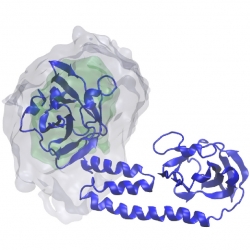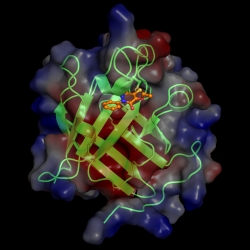Ongoing Research
You are here

Pilus Assembly in Bacterial Pathogens
Bacterial pathogens display virulence factors that enable them to adhere to host tissues, resist phagocytic killing, invade host cells and acquire essential nutrients. We are studying how bacteria synthesize and display two types of virulence factors: (i) pili, proteinaceous fibers that project from the bacterial cell surface to mediate adhesion, and (ii) Wall Teichoic Acids (WTAs), highly abundant cell wall anionic glycopolymers that regulate cell division, and other fundamental aspects of bacterial physiology. A greater understanding of these processes could lead to new antibiotics to...
Read More
Host-Pathogen Interactions: Heme-Iron Acquisition
To successfully mount infections bacterial pathogens actively procure iron from their human host, which is extremely scarce because of nutritional immunity mechanisms. Hemoglobin within erythrocytes is an attractive source of iron, as it contains ~75-80% of the body’s total iron in the form of heme (iron-protoporphyrin IX). In ongoing research, we studying the molecular mechanisms used by Gram-positive bacteria to remove hemoglobin’s heme molecule, the first step gaining access to this rich nutrient source. In collaborative studies we are applying computational and experimental...
Read More
Chemical Biology: Antibiotic Discovery
The emergence of antibiotic resistance bacteria is significant health concern. Our goal is to discover new anti-infective agents that can be used to combat infections caused by methicillin resistant Staphylococcus aureus (MRSA) and other multidrug resistant Gram-positive bacteria. Toward this objective, we are using high throughput screening approaches to identify small molecules that prevent bacteria from displaying virulence factors. Our research is a collaborative effort with Mike Jung and Hung Ton-That’s research groups at UCLA, and employs computational, structural and...
Read More